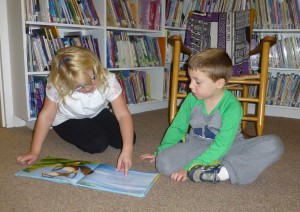
We met with our fourth grade book buddies for the first time today. This year, Mrs. Ferguson (the Fourth Grade teacher) and I are hoping to get together at least once every six day cycle. Right now, we’re are scheduled to meet on Day 2.
This tradition is held very dear here at WTN. All of our grades have reading buddies. The elder children get the opportunity to model literacy and be a mentor for the little ones. The younger buddies love having the one-on-one attention.


